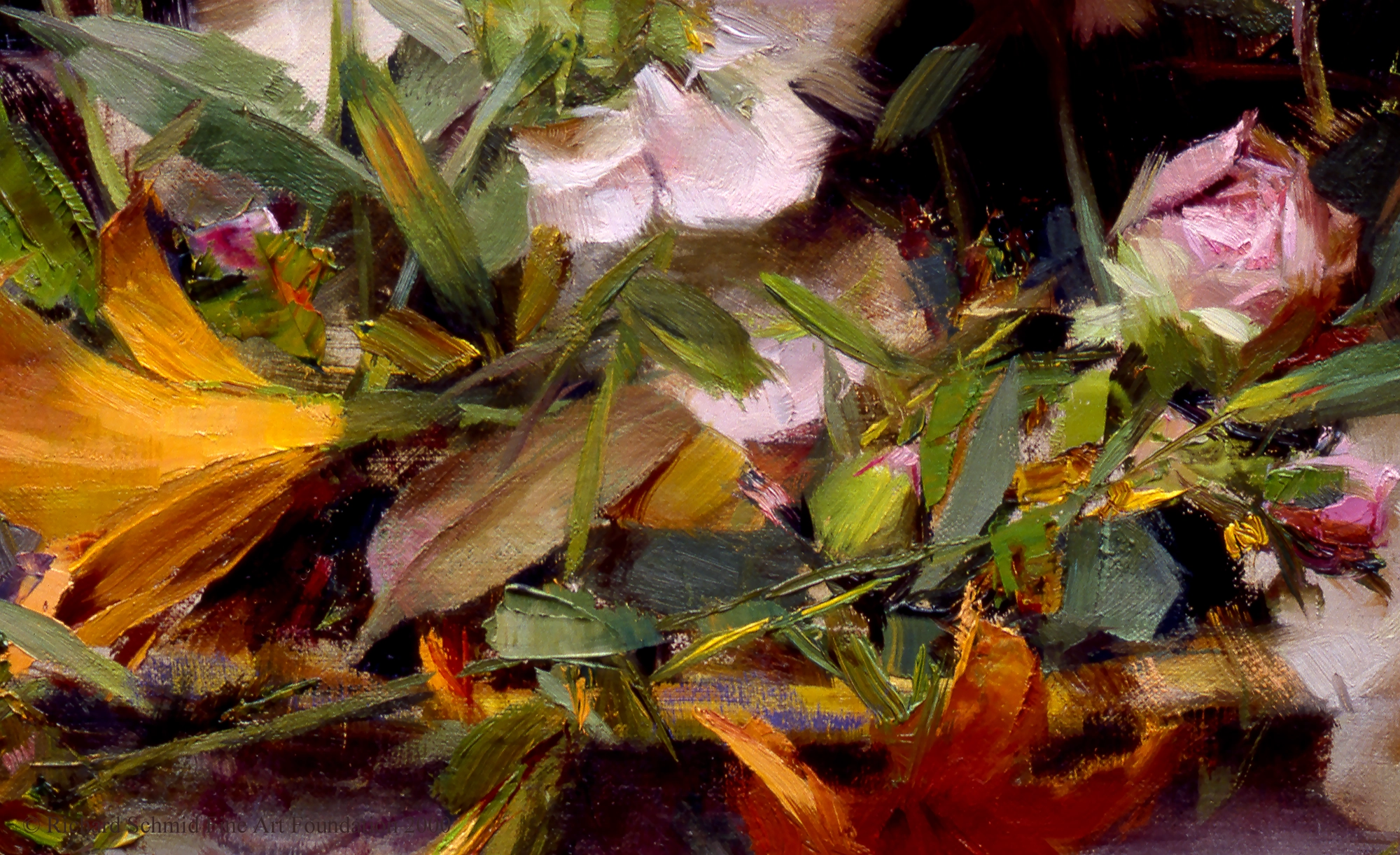Richard’s Page
RICHARD SCHMID, 1934- 2021
“My mission is to bring to the world of Art the unique classical training I received and the subsequent knowledge I gained as a painter during my sixty-plus year career. I also wish to impart my philosophical ideas about creativity and the responsibilities of being a professional artist and author.
Underlying all I paint and publish is the guiding principle that being an artist is a calling, rather than just an occupation or just a way to earn a living.”
Excerpt from Richard Schmid Fine Art Foundation Vision Statement — Richard Schmid 2019

Richard’s paintings and enduring spirit live on with the Richard Schmid Fine Art Foundation. Entrusted with preserving his living legacy, the Foundation carries forward his mission: to instruct, educate, and pass on the knowledge of Representational Art to future generations—just as Richard did, with unwavering inspiration and joy shared across the world.
A Note from Nancy
Years ago, Richard shared with me his dream of creating a special webpage—a place that would resonate with you and art enthusiasts worldwide. He envisioned a space where he could share his thoughts, his art, and his writing and connect with artists and art lovers, and he fondly named it “Richard’s Page.”
Today, as we embark on this adventure, we carry forward his vision of fostering a conversation with you.
We begin “Richard’s Page” with one of his essays from NOTES FROM THE HAYLOFT, a series he wrote between 1999 and 2004, capturing his reflections during his time in Brattleboro, VT.
Forever Grateful, Nancy and Richard in spirit…
“The way I work now often calls for time consuming, highly intricate, almost nit-picking brushwork—just the opposite of the way I was taught—but my vision of my subject demands it.” – RS
Richard Schmid’s – Notes from the Hayloft
May 29, 2024
Patience
…Before I get to the specifics of patience as it relates to art, I’d like first to share with you something about flowers. Usually, I regard painting them as a special pleasure, almost a form of recreation. Their brilliant colors are hard to miss and their forms (appear to) offer endless latitude for carefree drawing—seemingly no great task compared to figure painting or portraiture. The truth is that a flower is not something to sniff at (pardon the pun). Viewed carefully, a floral arrangement (in nature or otherwise) presents problems in color and form as complex as the most demanding of other subjects. Leaves aren’t easy either. They are, in fact, much more difficult to paint than blossoms. Why? Mainly because they are not generally considered as appealing or interesting as flowers, and also at first glance they seem repetitious in form and color—some might even say they are boring. They are none of those things, of course. They are difficult, but fascinating, and I’ve come to rate the relative success of my floral attempts by how effectively I render leaves and stems.

PEONIES (Detail), oil, 18”x 30”, 2000
This time, however, although painting them was still a pleasure, the little lovelies from our garden conspired to challenge me as never before. Actually, for some time I have been challenging myself to paint them (and everything else) in a way I had not often done previously. Allow me to explain. Lately, perhaps because I’m older, I seem to be seeing things in my subjects I had been in the habit of overlooking (or things I had noticed but dismissed as unworthy for inclusion in my pictures), in this case, for example, the extraordinary colors and forms in wilted or dead flowers and leaves, or the apparent irregularity of the way things grow.
In other words, I am more sensitive now to all of the things in nature, the qualities and elements which taken together (pleasing to me or not), make things look like what we call “natural.” As a result, I resist any temptation to “clean things up” or prettify my subject. At the same time, I make no willful attempt to make things “ugly” or try to show that “ugly” is actually “beautiful.” Nature is neither; it simply is what it is, and that’s what I’m after. We attach the evaluation labels of “pleasing” or not. (And there you have part of my current philosophy of aesthetics in a nutshell).
So—all of this means a new test each time I set out to paint—how to render the subtleties awaiting me in a convincing and interesting way. In the course of trying to accomplish that I am constantly made strongly aware of the vital importance of simple patience in my efforts. I know about patience, of course, but like many other human requirements, it is a discipline that needs frequent reinforcement. Too often I take things for granted (a negative side effect of successful paintings in the past). I tend to relax, forgetting that each new subject is unique, and that a procedure that worked before will not necessarily always work.
Another complication is that I must frequently work other than the way I was initially trained to paint. Bill Mosby, my most influential teacher, was a big fan of the loose broad-brush styles of Sargent, Sorolla, and Zorn; an ideal technique I too came to revere and emulate. Such a way of applying paint is marvelous of course and I love doing it, but as I discovered, it is by no means the only way to achieve results. In the course of fifty years of experimenting, I found that other more complex and cautiously demanding styles were required to achieve the effects I was after. The way I work now often calls for time consuming, highly intricate, almost nit-picking brushwork—just the opposite of the way I was taught—but my vision of my subject demands it. Thank God, somehow it still gives me the lavish results I want—but believe me, much of that cannot be done without a lot of patience.

PEONIES oil, 18”x 30”, 2000
“The way I work now often calls for time consuming, highly intricate, almost nit-picking brushwork—just the opposite of the way I was taught—but my vision of my subject demands it.” – RS
